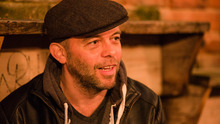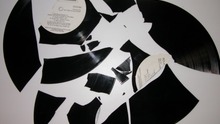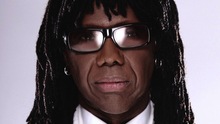America in 1970 was a country at war with itself. The utopian aspirations of the 60s – peace, love, civil rights – had never looked so distant and unattainable. Opposition to the drawn-out and bloody war in Vietnam was burgeoning, with details of the 1968 My Lai massacre, in which 200 innocent Vietnamese were murdered by US troops, still fuelling protesters’ determination. Student riots were crushed by the military, and, in May 1970, the Ohio National Guard shot dead four student bystanders at a Kent State University disturbance.
Moves towards granting civil rights to blacks had stalled, and with arch-conservative Richard Nixon now in the Whitehouse, any hope of progress was futile. Inner-city racial violence was an everyday occurrence.
At the same time, James Newell Osterberg – better known as Iggy Pop – was himself falling apart. His Detriot-based band’s eponymous debut had sold poorly and they had slipped deep into heroin addiction. Not that smack was their only poison. At the same time as the dreams of the 60s turned to mud, The Stooges took the hippies’ favourite drug – LSD – with the intention of only singing about the bad trips.
Recorded against this backdrop, ‘Fun House’ is the definitive death knell of the 60s, an urgent and vital reflection of the breakdown in American society, and of the breakdown of the debauched genius who articulated it like no-one else could.
Primitive, raw and incendiary, ‘Fun House’ threatens to break down into chaos right from the first note. Though not the most gifted musicians in a technical sense, Ron Asheton (guitar), brother Scott (drums) and Dave Alexander (bass) rock so urgently you’d think their lives depended on it. Excess in everything was The Stooges’ philosophy. Opener ‘Down on the Street’, not content with one guitar playing the frantic solo, has two simultaneously surging up against each other. The adrenalin rush is unbeatable.
Muddily-mixed ‘Loose’ is the ultimate garage rocker – you can almost smell the abandon as Pop yells “I’ll stick it deep inside…’cos I’m loose.” And he’s half right when he declares: “I took a record of pretty music and I’m putting it to you straight from hell.”
Pop’s vocal performance is as chaotic and disconcerting as the album’s artwork – he grunts, yelps and screams like a man possessed, with lyrics rarely amounting to more than a couple of squawked lines. It’s almost as if he can’t keep up with the music’s high-speed trajectory. On the seven minute fusion-influenced title track, he sounds eerily sinister and predatory, intoning over the sickeningly repetitive bassline: “I came to play and I mean to play around.” This is one man you would definitely not choose as a babysitter.
As the album progresses, the desperation increases. Stephen Mackay’s inflammatory sax-solo at the end of ‘1970’ takes the band to the brink of self-destruction. At the end of the cathartic ‘Fun House’, the inevitable finally happens and they descend into the chaos that has been threatening throughout the album. ‘LA Blues’ is five minutes of utter sonic anarchy, heralded by Pop’s agonised scream. Not one for the jukebox.
Life imitated art: the end of the recording of ‘Fun House’ effectively saw the end of The Stooges (at least until David Bowie took it upon himself to resurrect the band with a slightly different line-up in 1973), with Pop and co. falling ever deeper the mire of heroin addiction.
Shunned by the public at the time of its release, ‘Fun House’ nevertheless went on to become hugely influential, with bands from Television to The Red Hot Chilli Peppers to The Strokes all taking something from The Stooges’ brief but rich legacy. But, 32 years on, no band has even come close to replicating the heady, chaotic abandon of this album. A head trip to listen to, as another Motor City native might put it.
-
10Jon Smith's Score





















